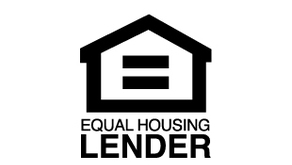Refinance is a common term you hear in the real estate world, but it’s one we haven’t talked much about lately.
Welcome to A and N Mortgage, where we understand that financial well-being is a journey, not a destination. Today, we delve into a topic that could potentially reshape your financial landscape – mortgage refinancing. If you’ve been contemplating whether it’s the right move for you, we’re here to guide you through the process and illuminate the numerous benefits it can bring.
Refinancing a mortgage essentially involves replacing your existing home loan with a new one. This new loan comes with revised terms, such as a lower interest rate, a different loan duration, or even a shift from an adjustable-rate mortgage (ARM) to a fixed-rate mortgage. The primary goal is to optimize your financial situation and, in turn, potentially save you money.
Top Reasons to Refinance:
Lower Interest Rates
One of the most common reasons homeowners opt to refinance is to secure a lower interest rate. Even a slight reduction can lead to significant long-term savings.
Monthly Payment Reduction
Refinancing can provide an opportunity to extend the loan term, resulting in lower monthly payments. This can be beneficial for those looking to ease their immediate financial burdens.
Equity Utilization
As your home’s value appreciates, refinancing allows you to tap into your home equity. Whether for home improvements, education expenses, or debt consolidation, it’s a powerful tool for leveraging your investment.
Switching Loan Types
Moving from an adjustable-rate mortgage to a fixed-rate mortgage can provide stability and protection against potential interest rate hikes in the future.
Shortening Loan Term
For those looking to pay off their mortgage sooner, refinancing to a shorter loan term can help build equity faster and reduce the overall interest paid.
Debt Consolidation
Rolling high-interest debts, such as credit card balances, into your mortgage, can consolidate payments and potentially lower your overall interest rate.
You may also read: Why You Should Consider Refinancing Your Mortgage This Summer
The Refinancing Process:
Assessment
Begin by evaluating your current financial situation and determining your refinance goals.
Credit Check
A solid credit score is crucial for securing favorable refinance terms. Check your credit report and address any discrepancies.
Documentation
Prepare necessary documents, including income verification, employment history, and property appraisals.
Shop Around
Explore different lenders and mortgage products to find the best fit for your needs.
Application
Once you’ve chosen a lender, submit your application. Be prepared for the underwriting process, which includes a thorough examination of your financial history.
Closing
Upon approval, attend the closing to sign the new loan documents.
Refinancing your mortgage is not just a financial transaction; it’s a strategic move to optimize your financial future. We believe in empowering our clients with the knowledge and resources to make informed decisions. If you’re ready to embark on this financial journey, our dedicated team is here to guide you every step of the way. Unlock the doors to financial flexibility and potential savings – let’s shape a brighter future together.







